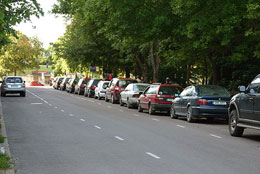Baltic States – CIS, Estonia, Legislation, Transport
International Internet Magazine. Baltic States news & analytics
Sunday, 11.05.2025, 17:14
Cars no longer have to queue on the Estonian-Russian border in Narva
 Print version
Print version |
|---|
Lorries, on the other hand, still have to queue because, according to the Mayor of Narva Tarmo Tammiste, the City Government has not been able to reach an agreement with international carriers on the virtual queuing – the lorry drivers prefer the physical queues.
All drivers of cars, on the other hand, can register for a spot in the queue over the internet or by phone and thus the physical queue for cars has been eliminated. “The queue is a virtual one,” said Tammiste.
Russian tourists and Estonian businessmen who have priority in the queue can during working days get across the border immediately; only on Sundays they have to wait for up to three hours. “We have to guarantee that people who have come here on the basis of a visa can get back home before the visa deadline falls and that Estonians working in St Petersburg could get to work in a timely manner,” explained Tammiste.
Usually, there are approximately a dozen cars waiting to get to the border. “Everyone who is registered knows approximately their time of access to the border crossing point and those who wish will get a text message 45 minutes before they are received on the border,” said Peter Shulga, an employee of Transservis-N, the municipal company that organises the border queue. “People can spend their time calmly in cafés in the city and do not have to suffer the heat from the sun, sitting in the car on our parking lot,” he added.
By Wednesday afternoon, 2,900 cars had registered for crossing the border in Narva; the last ones have hope to get to the border in 5-6 days. “Everything depends on how fast the Russians work. If they are moving slowly, they explain it with the repair works on the bridge; if they are progressing at a normal pace, they do not have any explanations,” commented Shulga.
After the chairman of the Court of Auditors of the Russian Federation Sergey Stepashin visited Estonia, the Russian border authorities started working faster, but the slow work progress on the Russian border stems from the procedures that are prescribed by Russian laws. The procedures that are on the Estonian border carried out by one person require on the Russian border five officials who have to repeatedly enter the same data into the computers by hand.








 «The Baltic Course» Is Sold and Stays in Business!
«The Baltic Course» Is Sold and Stays in Business!

